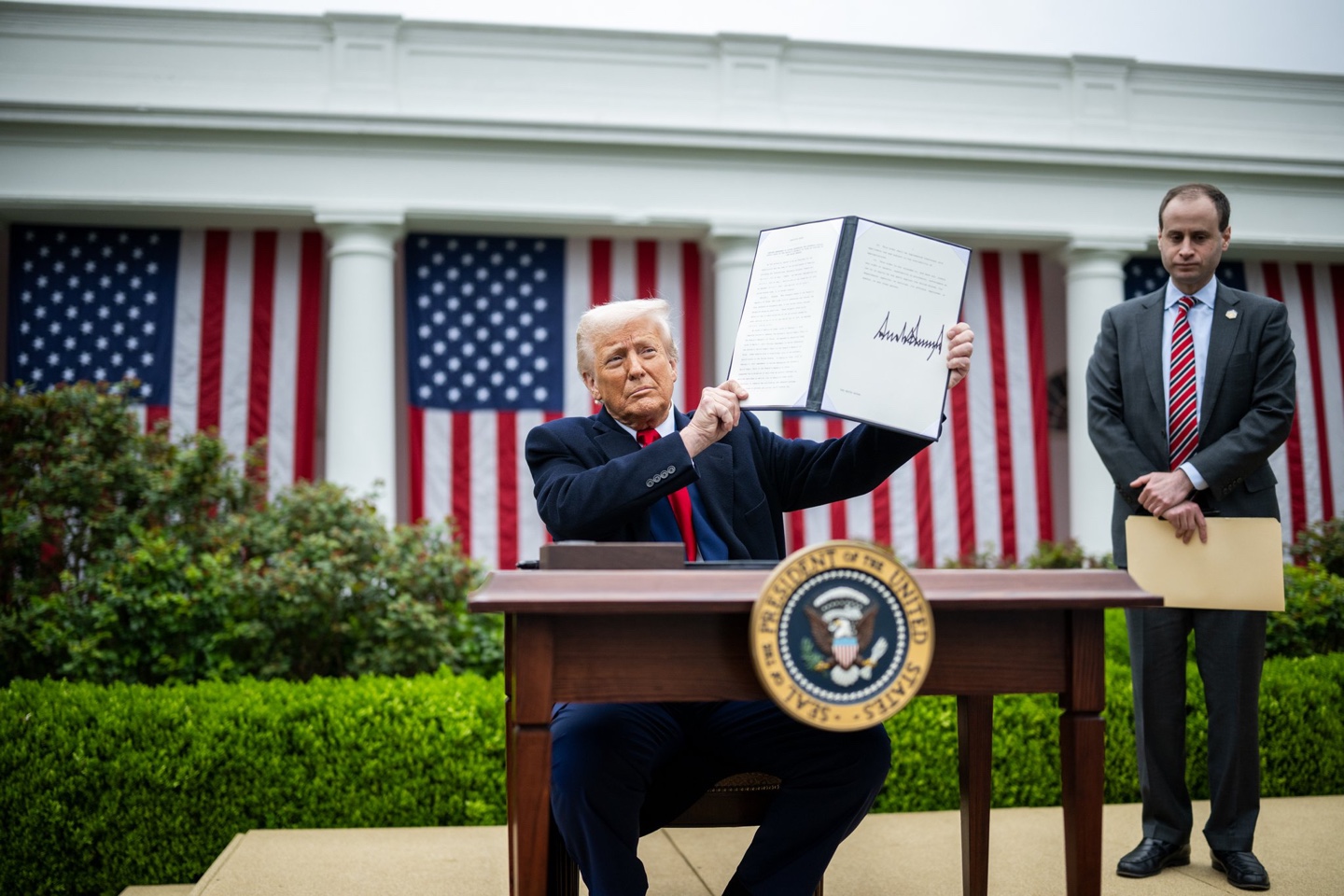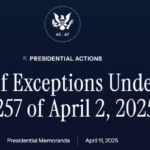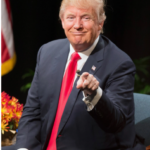On April 2, 2025, President Donald Trump announced a comprehensive set of tariffs aimed at addressing what he described as unfair trade practices contributing to significant U.S. trade deficits. This initiative, referred to as “Liberation Day,” introduces a two-tier tariff system:Vox+10New York Post+10Business Insider+10
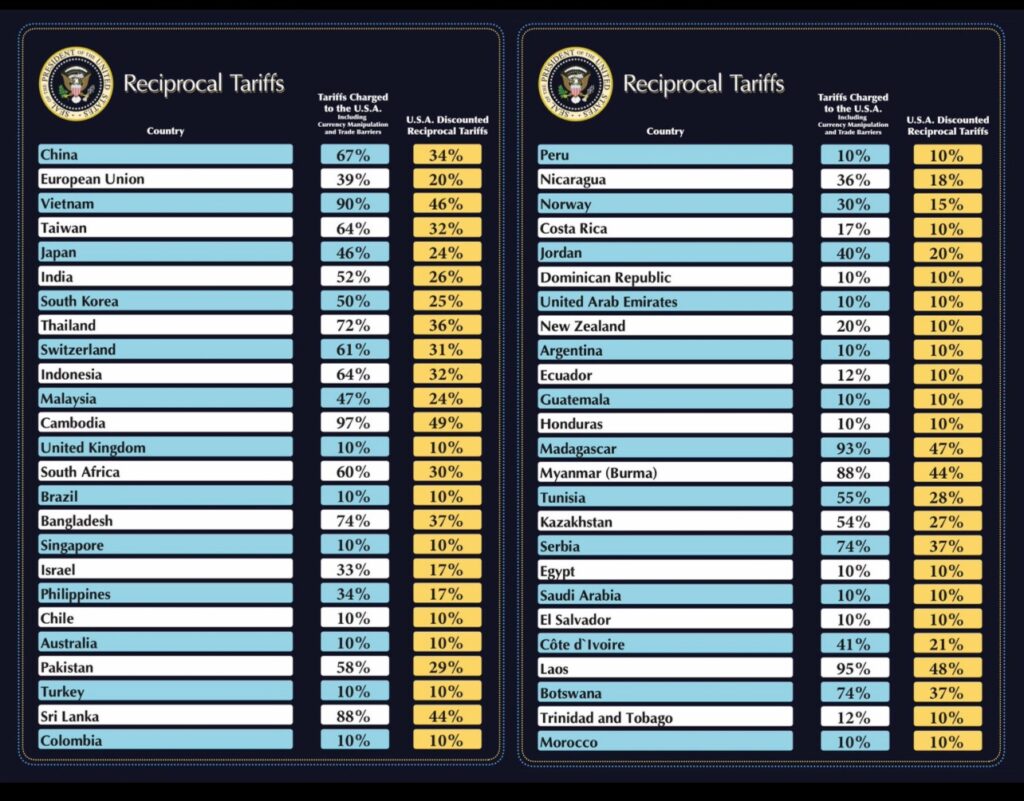
- Baseline Tariff: A universal 10% tariff on all imported goods, effective April 5, 2025, at 12:01 a.m. EDT. Wikipedia+2The White House+2Wikipedia+2
- Country-Specific Tariffs: Higher tariffs targeting specific countries with substantial trade imbalances or restrictive trade barriers, effective April 9, 2025, at 12:01 a.m. EDT. Notable rates include:Wikipedia+2The White House+2Wikipedia+2
- China: 34%
- Vietnam: 46%Reuters+16Axios+16The White House+16
- European Union: 20%Axios+3The Irish Sun+3Vox+3
- Japan: 24%
- India: 26%The White House+1The White House+1
- South Korea: 25%Wikipedia+7The White House+7The White House+7
- Taiwan: 32%The White House
- Cambodia: 49%
- Sri Lanka: 44%
- Bangladesh: 37%
- Thailand: 36%
- Indonesia: 32%Wikipedia+2Wikipedia+2ABC News+2
- Switzerland: 31%
- South Africa: 30%The White House+4The White House+4The White House+4
- Pakistan: 29%CBS News+11The White House+11CBS News+11
- United Kingdom: 10%
Additionally, a 25% tariff has been imposed on all imported passenger vehicles and light trucks, as well as key automobile parts. The White House+6The White House+6The White House+6
President Trump framed these measures as a “Declaration of Economic Independence,” asserting that they aim to revitalize domestic industries and reduce reliance on foreign manufacturing. Wikipedia+2New York Post+2Axios+2
Critics, including international leaders and economic analysts, have expressed concerns about potential retaliatory actions from affected countries, the risk of escalating trade wars, and the possibility of increased consumer prices in the U.S. due to higher import costs. The Guardian
The administration maintains that these tariffs are necessary to correct longstanding trade imbalances and to promote fairer competition for American businesses and workers.
📜White House Tariff Policy – April 2025 Summary
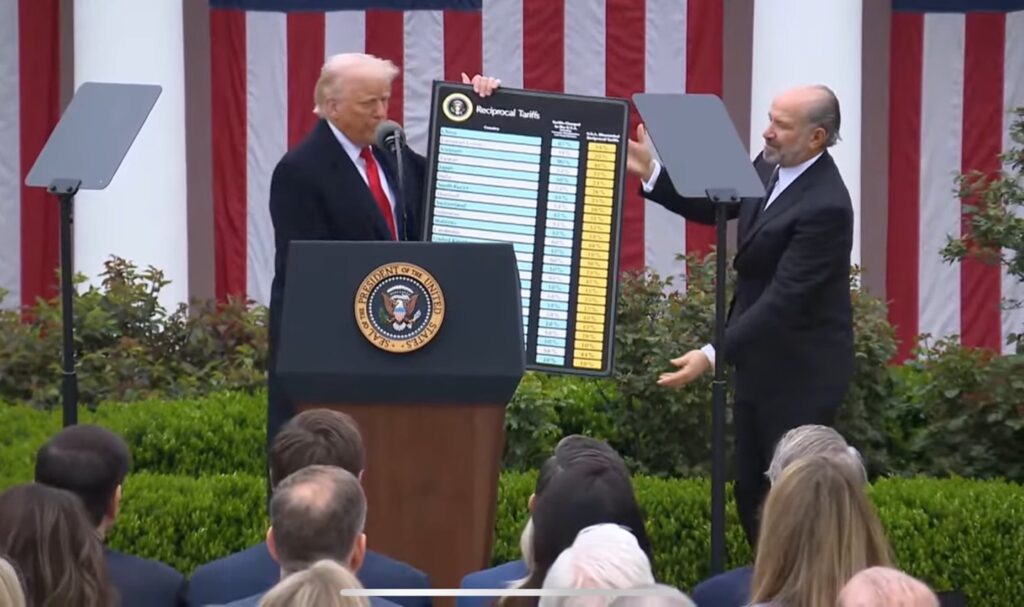
Credit: White House
President Trump declared a national emergency over persistent U.S. trade deficits caused by non-reciprocal tariffs and barriers from trading partners. This executive action introduces reciprocal tariffs targeting unfair trade practices and highlights U.S. manufacturers’ disadvantage in global trade, citing examples like auto and tech import tariffs from China, India, and the EU.
Key Insight: The U.S. average tariff is just 3.3%, far below China’s (7.5%), India’s (17%), and Brazil’s (11.2%), reinforcing the rationale for reciprocal action.
Full source: whitehouse.gov
📜White House Order: Tariffs on Low-Value Imports from China & Hong Kong (Effective May 2, 2025)
Purpose:
To combat illegal synthetic opioid imports from China, the U.S. is amending duties on low-value imports (valued under $800) from China and Hong Kong.
Key Provisions:
- Ends de minimis exemption for certain Chinese/Hong Kong products shipped by mail (starting May 2, 2025).
- Duty Rates:
- 30% ad valorem OR
- $25 per package (May 2–May 31, 2025)
- $50 per package (starting June 1, 2025)
- Applies to all mail and parcel services transporting goods from the PRC and Hong Kong.
Implications:
This affects e-commerce giants like Temu, Shein, and AliExpress, which rely on small, direct-to-consumer shipping models. It may also influence Meta’s advertising revenue from these platforms.
Source: WhiteHouse.gov Executive Order
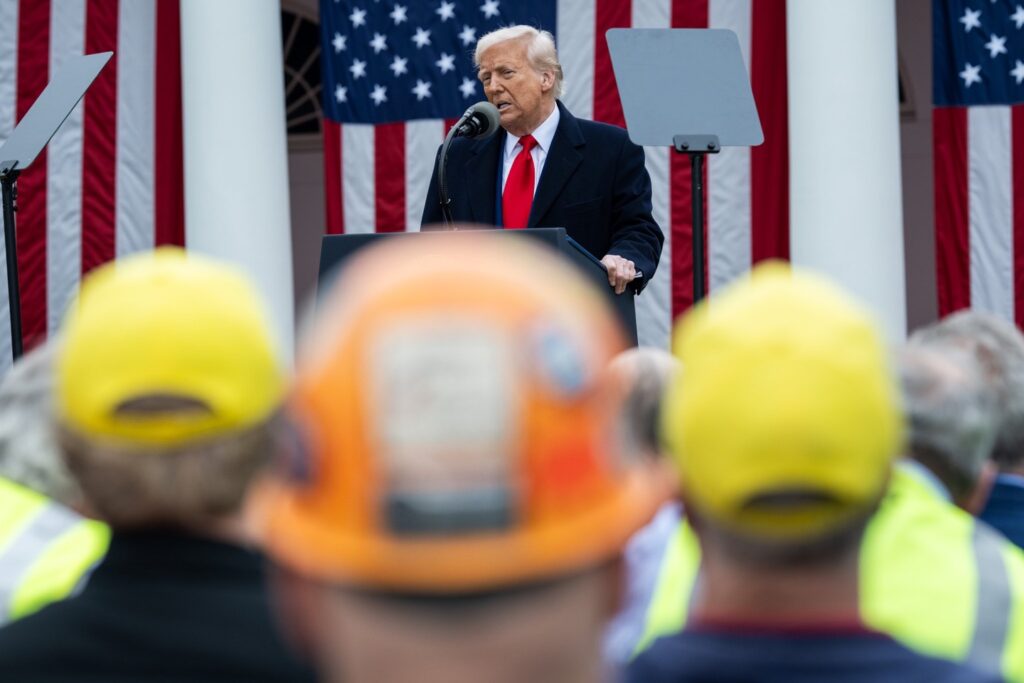
Credit: White House
📜 Tariffs Work — Evidence from Trump’s First Term (White House Article Summary)
The April 2, 2025 article defends President Trump’s use of tariffs, claiming they strengthened the U.S. economy during his first term and are doing so again in his second.
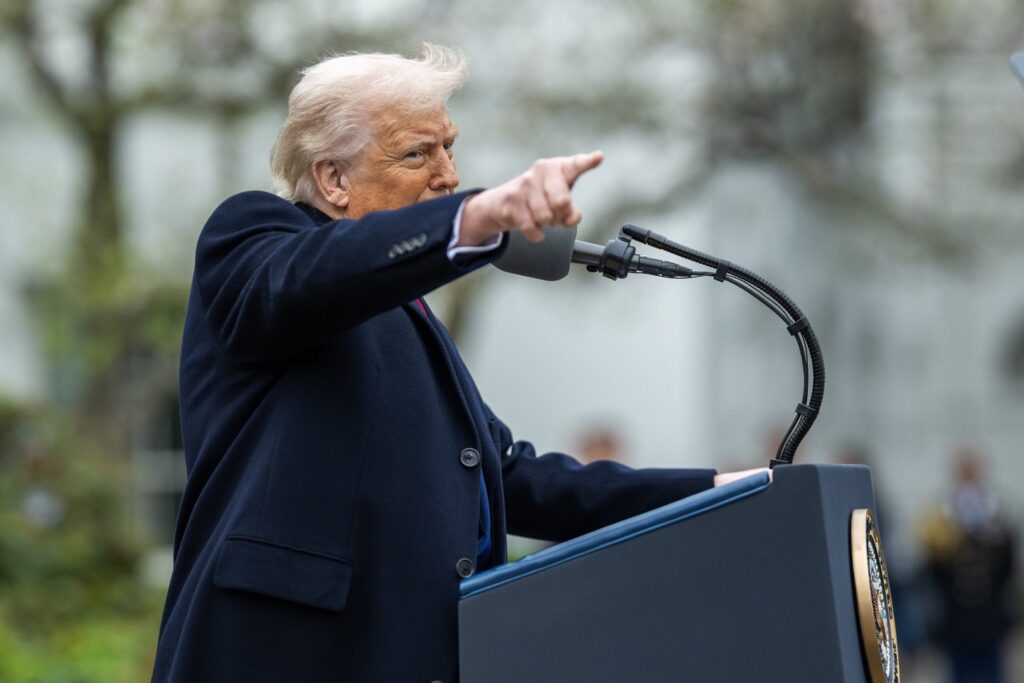
Credit: White House
Key Data Highlights:
- USITC Report (2023): Trump-era tariffs led to reshoring and reduced reliance on China.
- Economic Policy Institute: No meaningful inflation impact from 2018–2020 tariffs; instead, U.S. steel output and investment surged.
- $15.7B in steel facility investments created over 3,200 jobs in the U.S.
- Tariffs resulted in over $10 billion in new mill construction and boosted credit for U.S. producers.
Criticism Addressed:
The article refutes earlier claims of trade war risks and inflation, citing positive data from sources like the Atlantic Council, S&P Global, and IndustryWeek.
Implication:
The administration argues tariffs are a strategic economic tool to restore fair trade, reshore jobs, and protect critical industries like steel and semiconductors.
Full article: whitehouse.gov
On April 2, 2025, President Donald Trump announced a comprehensive set of tariffs aimed at addressing what he described as unfair trade practices contributing to significant U.S. trade deficits. This initiative, referred to as “Liberation Day,” introduces a two-tier tariff system:Vox+10New York Post+10Business Insider+10
- Baseline Tariff: A universal 10% tariff on all imported goods, effective April 5, 2025, at 12:01 a.m. EDT. Wikipedia+2The White House+2Wikipedia+2
- Country-Specific Tariffs: Higher tariffs targeting specific countries with substantial trade imbalances or restrictive trade barriers, effective April 9, 2025, at 12:01 a.m. EDT. Notable rates include:Wikipedia+2The White House+2Wikipedia+2
- China: 34%
- Vietnam: 46%Reuters+16Axios+16The White House+16
- European Union: 20%Axios+3The Irish Sun+3Vox+3
- Japan: 24%
- India: 26%The White House+1The White House+1
- South Korea: 25%Wikipedia+7The White House+7The White House+7
- Taiwan: 32%The White House
- Cambodia: 49%
- Sri Lanka: 44%
- Bangladesh: 37%
- Thailand: 36%
- Indonesia: 32%Wikipedia+2Wikipedia+2ABC News+2
- Switzerland: 31%
- South Africa: 30%The White House+4The White House+4The White House+4
- Pakistan: 29%CBS News+11The White House+11CBS News+11
- United Kingdom: 10%
Additionally, a 25% tariff has been imposed on all imported passenger vehicles and light trucks, as well as key automobile parts. The White House+6The White House+6The White House+6
President Trump framed these measures as a “Declaration of Economic Independence,” asserting that they aim to revitalize domestic industries and reduce reliance on foreign manufacturing. Wikipedia+2New York Post+2Axios+2
Critics, including international leaders and economic analysts, have expressed concerns about potential retaliatory actions from affected countries, the risk of escalating trade wars, and the possibility of increased consumer prices in the U.S. due to higher import costs. The Guardian
The administration maintains that these tariffs are necessary to correct longstanding trade imbalances and to promote fairer competition for American businesses and workers.
